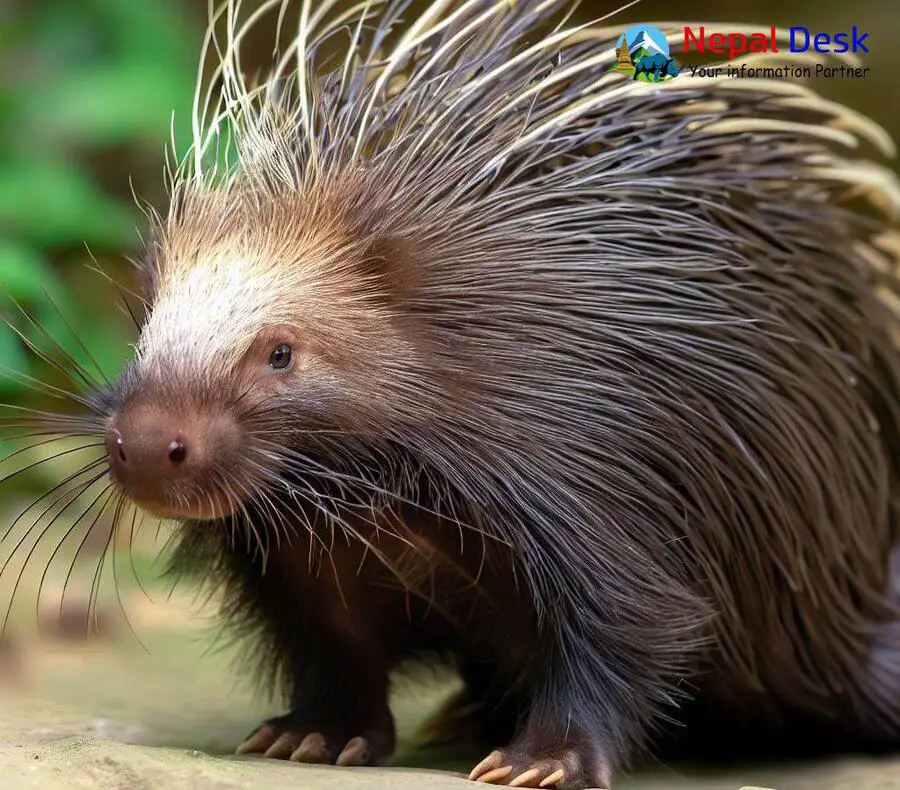
The Asiatic brush-tailed porcupine (Atherurus macrourus) is a species of rodent that is found in Nepal. The animal has a stocky build, with a body length of around 50 to 70 cm and a weight of approximately 4 to 8 kg. The body is covered in sharp quills, which can grow up to 30 cm in length. The quills are used for self-defense against predators.
Both male and female Asiatic brush-tailed porcupines have similar physical characteristics, although males tend to be slightly larger than females. The animal is nocturnal and is most active during the night, spending the day sleeping in burrows or hollow logs.
Interesting facts about the Asiatic brush-tailed porcupine include that they are excellent climbers, and they can easily climb trees to escape danger or to access food. They are also good swimmers, and they can use water as a means of escape. When threatened, the porcupine will raise its quills and make a loud hissing noise, warning potential predators to stay away.
The Asiatic brush-tailed porcupine is an herbivore, and its diet mainly consists of roots, fruits, and bark. It has strong jaws and teeth that allow it to chew through tough plant materials. The animal's breeding habits are not well understood, but it is known that females give birth to litters of 1 to 3 young, which are born with soft quills that harden within a few days.
In terms of classification, the Asiatic brush-tailed porcupine belongs to the family Hystricidae, which includes other species of Old World porcupines. Its conservation status in Nepal is not well known, but its habitat is threatened by deforestation and hunting for its meat and quills.
The Asiatic brush-tailed porcupine is commonly found in Nepal's subtropical and tropical forests, as well as at elevations of up to 3,000 meters. It prefers to reside in regions with a combination of trees, shrubs, and tall grasses, where it can find shelter and food.
The feeding habits of the Asiatic brush-tailed porcupine are mainly herbivorous, as it feeds on leaves, roots, tubers, fruits, and bark. It is primarily active at night and rests in burrows or hollow trees during the day.
In terms of reproduction, female Asiatic brush-tailed porcupines give birth to one to three young per litter. The young are born with soft quills, which harden within a few days. These quills are used for defense against predators.
The Asiatic brush-tailed porcupine belongs to the family Hystricidae, which consists of Old World porcupines. It is a large species of porcupine, with an average body length of 55-90 cm and a weight of 4-18 kg. Its quills can grow up to 50 cm long, which are modified hairs used for defense.
The Asiatic brush-tailed porcupine is not currently considered endangered in Nepal. However, habitat loss and hunting for meat and quills are potential threats to the species. Therefore, conservation efforts, including habitat protection and regulation of hunting, are necessary to ensure the long-term survival of the Asiatic brush-tailed porcupine in Nepal.
